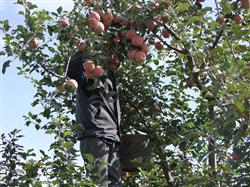Introduction of dragon fruit

The dragon fruit, which originated from the tropical rain forest of Central America, is a plant of the genus Opuntia and Ophiopodiaceae. It was introduced into Southeast Asian countries and Taiwan by the French and Dutch. The dragon fruit has a deep history with religious culture and is grown near the pyramids of the American Mayans and Incas and near Vietnamese temples in Asia. Whenever there are sacrifices and major religious activities, they will sacrifice the fruit on the altar and regard it as sacred fruit. What is even more amazing is that in both America and Asia, dragon fruit and Chinese dragon culture are inextricably linked. The ancient Incas sacrificed dragon fruit with a totem engraved with a resemblance to a Chinese dragon, which means dragon in Inca. To this day, indigenous Mexican men still like to call themselves Chinese boys, which may be influenced by the legend that their ancestors came to America from China. The dragon fruit is named because its fleshy scales resemble the outer scales of Jiaolong. When her bright and huge flowers bloom, they are full of fragrance, and potted ornamental plants make people feel auspicious, so they are also called "auspicious fruits". The dragon fruit is rich in nutrition and unique in function. it contains plant albumin and anthocyanin, rich vitamins and water-soluble dietary fiber, which are rare in general plants. 1. The content of anthocyanin in dragon fruit is higher. Anthocyanin is an effective antioxidant, which not only has the effects of anti-oxidation, anti-free radicals and anti-aging, but also can inhibit brain cell degeneration and prevent dementia. two。 Dragon fruit is rich in plant albumin, which is rare in general fruits and vegetables. This active albumin will automatically bind to heavy metal ions in the human body and be excreted through the excretory system, thus playing a role of detoxification. In addition, albumin has a protective effect on the gastric wall. 3. Dragon fruit is rich in vitamin c, which can eliminate oxygen free radicals and has the effect of whitening skin. 4. Dragon fruit is a kind of low-energy, high-fiber fruit, which is rich in water-soluble dietary fiber, so it has the effects of losing weight, reducing cholesterol, moistening intestines, preventing colorectal cancer and so on. 5. The iron content of dragon fruit is higher than that of ordinary fruit. Iron is an indispensable element in the production of hemoglobin and other iron-containing substances, which plays an important role in human health. 6. The sesame seed of dragon fruit has the function of promoting gastrointestinal digestion.
- Prev

Key points of Summer Management of Big Cherry
Autumn is the peak of root growth of fruit trees, and it is also the key period for trees to accumulate nutrients. At present, there are many ways to fertilize Yantai cherry. When it comes to the essentials of applying base fertilizer in autumn, we should first highlight the word "early". It is generally carried out from September to October, but the effect of early application in September is better.
- Next

A New method of pruning Apple trees in Summer and Autumn
The main results are as follows: 1. summer pruning methods for apple trees mainly include opening angle, branch thinning, twisting, branch softening, ring cutting and so on. Proper application of summer pruning measures is a prerequisite for high yield and high quality of fruit trees. if not used properly, it will affect the growth and fruit of fruit trees. 1. The opening angle is opposite to the backbone branch with smaller angle.
Related
- Moge, come on! The staff of the peasant association in the producing area of cantaloupe were frightened when the crowd gathered.
- Causes and Solutions of low Fruit setting rate of Apple
- Symptoms and control measures of passion fruit virus disease
- Fruit growing lesson: how do apple orchards keep high yields?
- Can you build orchards in the mountains? What are the pros and cons?
- How to manage the coloring period of Crisson grape?
- This paper introduces the processing technology of two kinds of fig products.
- How much is a month for retired teachers in rural areas by 2020?
- How can strawberry planting increase sugar content? We should pay attention to management in many aspects.
- What are the cultivation techniques on how to improve the yield of golden fruit?

